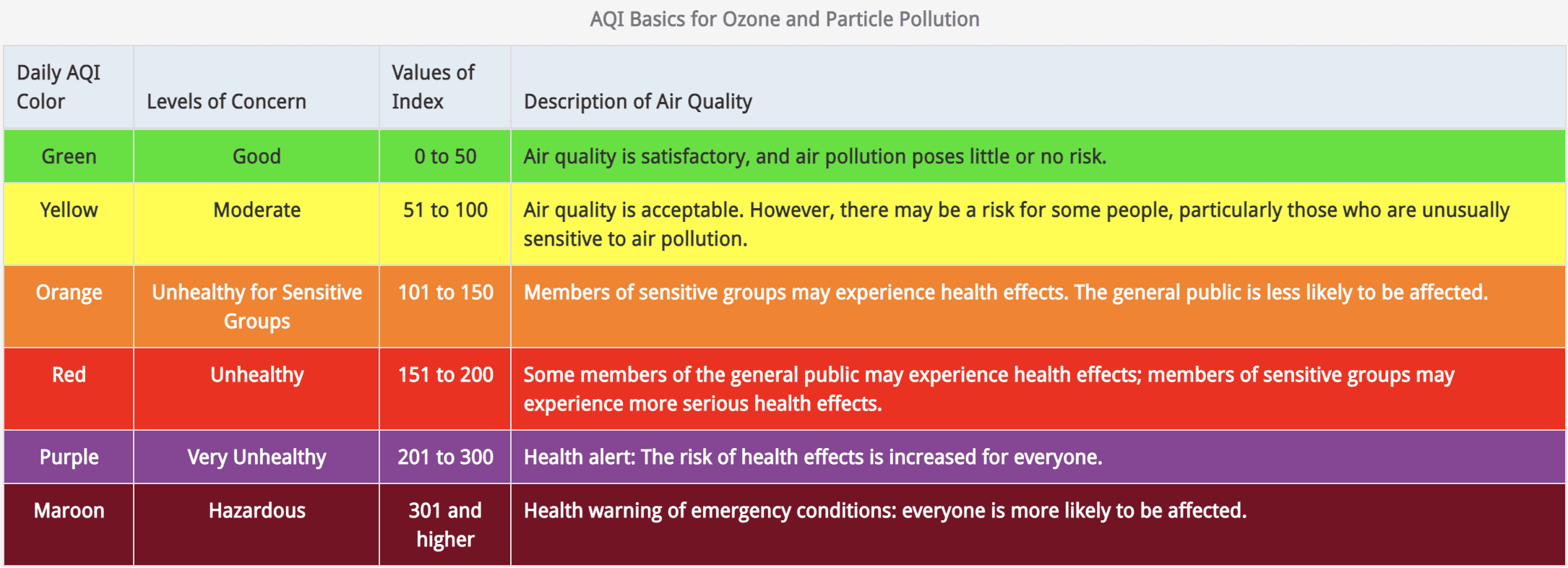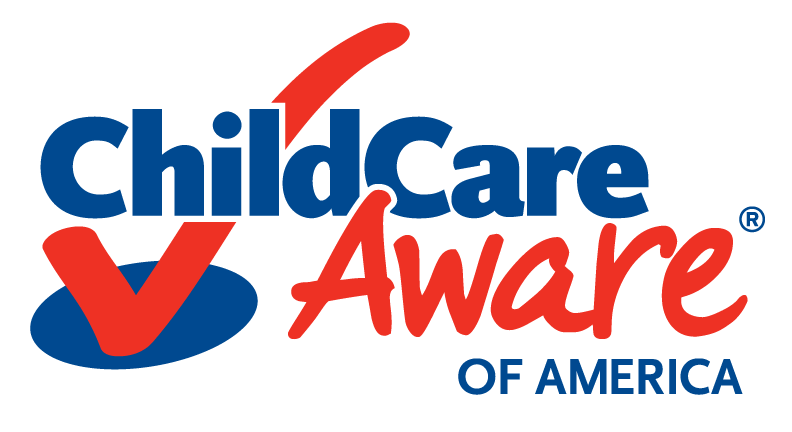Child care providers are always thinking about the health and safety of the children in their care. One critical issue to be aware of is air quality both inside and outside of your child care program.
Children are at greater risk from air pollution. The American Lung Association describes ways that children can be affected by poor air quality.
- Children can be more active, so they breathe in more air – and air pollution.
- Children have a greater risk of infection, coughing and bronchitis from air pollution.
- Breathing high levels of air pollution while growing up can affect how children’s lungs develop, which can lead to a greater chance of lung disease as they age.

Emergency Preparedness, Response, and Recovery
Outdoor air quality could be harmful following a volcanic eruption or a wildfire, or due to air pollution in general. If your community is impacted, it’s essential to ensure the children in your care are not breathing in any hazardous gases or smoke. There are websites and other tools to help you monitor outdoor air quality. (An example is shared below.)
Indoor air quality can be impacted by pollutants such as household products or building materials as well as ventilation and air flow. There are a variety of tools available to help monitor indoor air quality, including carbon monoxide detectors.
In a situation where the air quality is poor inside or outside a child care program, it is important to know how to respond. A written all-hazards emergency plan should include steps to take in case you need to evacuate or shelter-in-place in response to poor air quality.
Outdoor Air Quality
Outdoor air quality issues can affect a child care program, including the ability to safely take children outside to play every day. Outdoor air quality can be impacted by many things, including emissions from vehicles, industry pollution and smoke from fires. It is especially important to think about air quality during wildfire season. Wildfire smoke can include chemicals from materials that have burned. Smoke can travel hundreds of miles so child care providers should watch local air quality reports during wildfire season, even if there is no fire nearby.
Poor air quality can affect health. According to the United States Environmental Protection Agency (EPA), children are more likely to be impacted by contaminated air because they breathe in more oxygen relative to their weight than adults. Children must also be protected from poor-quality air because their lungs are still growing and, according to the American Lung Association, air pollution can limit lung growth.
According to the EPA, outdoor air pollution can be associated with many health issues, including:
- Headaches
- Irritation of the eyes, nose, and throat
- Asthma attacks
- Bronchitis
- Respiratory symptoms
- Hospital and emergency room visits
Monitoring Outdoor Air Quality
The U.S. Air Quality Index (AQI) is a tool that indicates air quality levels. The higher the AQI value, the greater the amount of air pollution and the greater the risk of health concerns.

The EPA and Partners offer an interactive air quality tool that reports the previous day’s air quality and offers an air quality forecast for a particular geographic area. Child care providers can use the forecasts to help plan outdoor activities for the day.
Many phone weather apps report outdoor air quality in addition to weather conditions. There are also apps specifically designed to check outdoor air quality, such as the AirNow Mobile App.
Airnow.gov offers air quality and outdoor activity guidance for schools. This information can be used by child care providers to decide when and how to modify outdoor physical activity based on the AQI.
In certain emergencies, it’s best to stay where you are and avoid any uncertainty and/or create a barrier between yourself and potentially contaminated air outside. If you see large amounts of debris in the air, or if local authorities say the air is badly contaminated, you may also want to seal the windows, doors, and air vents. This could be following a hazardous material spill (chemical, biological, or radiological).
The plan:
- Bring everyone inside!
- Lock doors, close windows, air vents and fireplace dampers.
- Turn off fans, air conditioning and forced-air heating systems.
- Take your Emergency Supply Kit into an interior room with few windows.
- Watch TV, listen to the radio or check the internet often for official news and instructions as they become available.
- Seal all windows, doors and air vents with plastic sheeting and duct tape. Tip: Pre-cut your plastic sheeting so it can quickly be applied to windows, doors, air vents, and other openings using duct tape. Wet cloth towels can also be used if plastic is not available.
Outdoor Air Quality During Wildfires
The American Lung Association offers some general recommendations to help avoid breathing and exposure to wildfire smoke. Many of these recommendations can be used by child care providers to help keep children safe during a wildfire.
- Stay indoors, unless prompted by local officials to evacuate.
- Do not rely on a dust mask to filter out the smaller particles in wildfire smoke.
- Take extra precautions for children because they are more susceptible to smoke.
- Protect the air inside.
- Keep doors and windows closed.
- Use air conditioners on the recirculation setting.
- Use an air cleaning device with a HEPA filter.
- Place damp towels under the doors and other places where outside air may leak in.
- Do not exercise outdoors, especially if you smell smoke or notice eye or throat irritation.
Indoor Air Quality
Indoor air quality is important because it impacts the health and comfort of people inside of buildings. It is important for child care providers to understand and control pollutants that may be inside their child care programs.
According to the EPA, indoor air pollutants may include:
- Fuel-burning combustion appliances
- Tobacco products
- Building materials and furnishings as diverse as:
- Deteriorated asbestos-containing insulation
- Newly installed flooring, upholstery, or carpet
- Cabinetry or furniture made of certain pressed wood products
- Products for household cleaning and maintenance, personal care, or hobbies
- Central heating and cooling systems and humidification devices
- Excess moisture
- Outdoor sources such as:
- Radon
- Pesticides
- Outdoor air pollution
Pollutant concentrations can remain in the air for long periods of time. Adequate ventilation is important to helping reduce indoor pollutant levels.
Reducing Exposure
The California Air Resources Board offers suggestions child care programs can use to reduce potential exposures. Steps to take include:
- Request and purchase low formaldehyde products.
- Turn on the range hood when using a gas stove. Increasing ventilation with outdoor air will also help reduce indoor formaldehyde levels.
- Clean frequently to minimize dust.
- Use ‘green’ cleaning products that are low in levels of volatile organic compounds (VOCs).
- Clean out old pesticides, solvents, and cleaning products.
- Reduce use of pesticides.
Carbon Monoxide
One indoor air pollutant that child care providers may encounter is carbon monoxide. According to the CDC, Carbon monoxide (CO) is an odorless, colorless gas that can cause sudden illness and death if inhaled.
Although symptoms of CO poisoning vary, it is important to know what to look for. Pediatric Environmental Health Specialty Units shares some information about what to look for. Early symptoms include:
- Headache
- Dizziness
- Weakness
- Drowsiness
- Nausea and vomiting
These symptoms can resemble those of a flu-like illness, but CO poisoning is not associated with a fever, and multiple people might exhibit symptoms if there is CO in the air.
Make sure to install carbon monoxide detectors on every level of your home or child care business, especially in areas where people will be sleeping. Install battery operated CO alarms or plug in CO alarms with a battery back up inside your home. Just like with smoke alarms, be sure to test your CO alarms and check the batteries every month. It is also important to know what sound each alarm makes so you know how to respond in an emergency.
Air Quality Resources
- Wildfires (CCAoA)
- Wildfire Smoke and COVID-19 (CDC)
- Children and Air Pollution (American Lung Association)
- Emergencies & Natural Disasters (American Lung Association)
- For Teachers (AirNow)
- Fire and Smoke Map (AirNow)
- Indoor Air Quality (EPA)
- Introduction to Indoor Air Quality (EPA)
- Resources about Indoor Air Quality for Child Care Providers (EPA)
- Ventilation in Schools and Childcare Programs (CDC)
- Children and Air Pollution (American Lung Association)
- Carbon Monoxide information (Caring for Our Children)
- Carbon Monoxide Poisoning: How to Protect Your Family (HealthyChildren.org)
- Generator Safety Fact Sheet (CDC)
- Proper Use of Generators in the Home Flyer (CDC)
- Air Quality Index Kids Website Teacher’s Reference (EPA)


